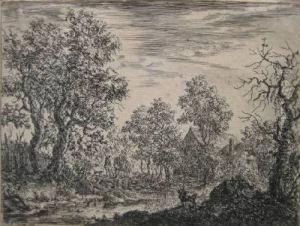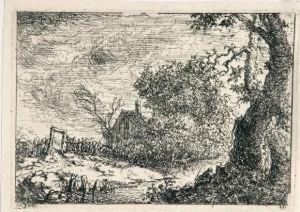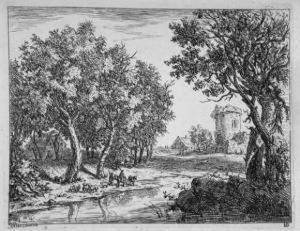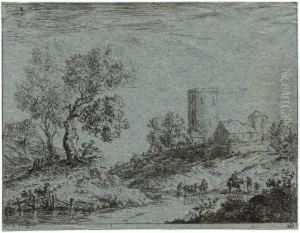Christian Ludwig Von Hagedorn Paintings
Christian Ludwig von Hagedorn was a German art historian, art collector, and writer during the 18th century, known for his significant contributions to the development of art theory and aesthetics in the context of the Enlightenment. Born on September 14, 1712, in Hamburg, he was part of a well-educated family. His brother, Friedrich von Hagedorn, was a notable poet of the German Enlightenment. Christian Ludwig embarked on a path that would lead him to become a seminal figure in the intellectual and artistic circles of his time.
Hagedorn's education and early career were marked by an extensive study of the arts and culture. He traveled widely throughout Europe, particularly in Italy, where he was deeply influenced by the Italian Renaissance and Baroque art. These experiences shaped his understanding and appreciation of art, leading to his later works that focused on art criticism and theory.
In 1742, Hagedorn was appointed as the director of the Elector of Saxony's collections in Dresden, a position that allowed him to further his study and involvement in the arts. He was instrumental in the acquisition and organization of artworks for the collection, which became one of the most important in Europe. His tenure at the Dresden collections significantly influenced the dissemination and appreciation of fine arts in Germany and beyond.
Hagedorn is best remembered for his seminal work 'Betrachtungen über die Mahlerey' (Reflections on Painting), published in two volumes between 1762 and 1781. In this work, he advocated for the autonomy of art and the importance of aesthetic judgment based on sensory perception, rather than on strict adherence to academic rules. His ideas reflected the broader Enlightenment emphasis on empirical observation and individual sensibility.
Christian Ludwig von Hagedorn's legacy lies in his forward-thinking perspectives on art and aesthetics, which helped lay the groundwork for modern art criticism. His contributions to the field were influential in shaping the discourse on art in Germany and helped establish a more secular and empirical approach to art criticism. Hagedorn passed away on April 22, 1780, in Dresden. His writings and collections continue to be studied and appreciated for their historical significance and their role in the evolution of art theory.



